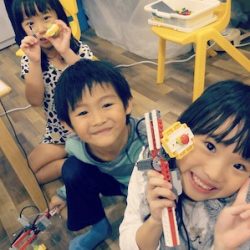SingaporeMotherhood | Parenting
August 2014
The Tuition Debate

When Parliament met in September last year, Senior Minister of State for Education and Law Indranee Rajah answered concerns about the on-going “phenomena” of the private tuition industry here.
[banner][/banner]
One year on, the debate on whether school-going children need tuition remains a hot issue. During a youth dialogue held last week, Prime Minister Lee Hsien Loong noted “we are doing too much tuition in Singapore“.
But we have no choice, lament some parents. From early on in primary school, principals remind parents that schools are there to help parents educate their children, not of the other way around. Teachers of P1 or P2 students may advise parents of lagging children to engage help now rather than attempt to play catch up later on in higher primary.
And of course, there’s that ‘k’ word, kiasu-ism. No parent wants his or her child to be left coughing on the dust of his peers while they sprint to the top. And even if the child is not doing badly in school, why take the risk? Wouldn’t it be better to send the kid for tuition, just to ensure that he stays within Band 1 rankings?
Tuition Culture in Singapore
Ideally, parents would prefer their school-going children to have little or no tuition.
Josephine Ang, 37, a lecturer and mother to a boy and a girl aged eight and three years respectively, shares that her son does homework set by her or my husband at a before-school care centre which he attends. He does not have tuition classes. “Many of my colleagues’ children only get tuition for science from P3 onwards,” she says.
“I have friends whose children who have no tuition at all. They only get ‘help’ one to two months before the PSLE (Primary School Leaving Examination) to teach the children how to score better,” says Lim Pey Ling, 37, a former banker and mother of a girl aged seven and twin boys aged five.
However, Pey Ling believes that these are “rare cases”. She adds: “Most children are attending tuition or seeking help in one way or another to cope with Singapore’s education system.”
Parents send children to tuition for a variety of reasons. Jissa Josh Jacob, 40, a former sales and operations manager and mother of three girls aged seven, six and four, invests time, money and effort in tuition “to set up a strong foundation”.
To her, it is important to learn how to learn, instill the discipline of sitting down to focus, as well as to know the different ways to approach a problem. She believes that tuition can help her children to develop these abilities.

Parents of children starting P1 next year may identify with Pey Ling, whose twin boys have Mandarin-language tuition. With these classes, she hopes that her children will be more prepared for primary school Mother Tongue learning. “Also, I hope these classes will allow them to have better knowledge of what they are learning,” she adds.
Tuition: The Pros
Pey Ling selected a Chinese tuition centre for her children based on friends’ recommendations. She found that tuition makes a positive impact on her children: “My children know the language better. My girl has been with the Chinese enrichment center for a year. Her improvement is tremendous. I’m glad that she doesn’t have to suffer low self-esteem about not being able to do well in Chinese.”
Tuition also offers ‘benefits’ to parents. “It takes some pressure away from me, trying to interest the child in the subject,” Pey Ling says.
For introverted children who do not speak up in school, a smaller class or one-to-one tuition could be more conducive to their learning. Liang Laoshi, 59, a Mandarin-language tutor for 35 years, once taught a painfully shy girl who had failed her Chinese Language exams in Primary 3.
The girl started to talk to Liang Laoshi unprompted only after three years of tuition. But her scores in the subject slowly improved, from a B at Primary 6, to an A2 at Secondary 4, to the highest score of 7 for her IB paper.
Tuition: The Cons
So much time is spent on tuition that kids these days do not have time to play, parents say. Sounds familiar? Jissa says: “It affects their playtime and time for family bonding. Also, they do not have any time for leisure reading.”
Since the family speaks almost no Chinese, her two older girls (who are in Primary 1 and 2) spend almost four tuition hours per week each on Chinese. This includes a group-based class, a one-to-one class, and a creative writing class. They also spend almost two hours per week at an English enrichment class.
In addition to the time spent, the cost, the to and fro travelling, there is a problem of dependency on tuition. Pey Ling admits, “Ideally, the children should learn in school then come back and revise on their own. If in doubt, they should clarify their doubts in school with the teacher, or with me.” But she sill finds herself becoming more dependent on the tuition teacher to teach her children and to revise with them.
Weaning Off Tuition
Despite her children being in multiple tuition classes, Jissa is convinced that surviving the school-going years without tuition is feasible “if expectations are realistic and education is well-structured and planned.”
“It totally depends on the teachers and the school’s expectation. If the school can take the responsibility of structural education, children can be weaned off from tuitions,” she says.
Pey Ling is striving towards independence from tuition by keeping up with self-study at home with her children. “I hope to keep tuition only to Chinese classes and allow my children to manage other subjects on their own,” she says.
All content from this article, including images, cannot be reproduced without credits or written permission from SingaporeMotherhood.
Follow us on Facebook, Instagram, and Telegram for the latest article and promotion updates.





